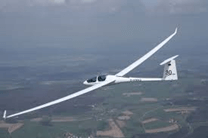1853
British engineer, George Cayley, credited with building the world’s first real glider.

1890
Otto Lilienthal of Germany along with his brother Gustav, built a series of small fragile gliders.
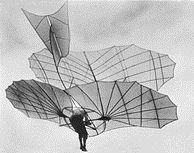
Late 1920s
These early gliders had no cockpit and the pilot sat on a small seat located just ahead of the wing.
They were known as “primary gliders” and they were usually “bungee” launched from the tops of hills, though they were also capable of short hops across the ground while being towed behind a vehicle.

Early 1930s
The Slingsby T.3 (a.k.a. Dagling) was a single-seat primary glider produced by Fred Slingsby in Kirbymoorside, Yorkshire.
The Ulster Gliding Club commenced operations with one of these. It became evident that this type of design required development to reduce the considerable drag.
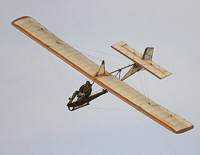
1930s
The following designs comprised more streamlined fuselages with the pilot sitting in an enclosed cockpit. Most were wooden framed construction covered in light plywood.
Examples of these were the Kassel 20 and 25 and the Kirby Kite (pictured below). These designs incorporated wing struts to support the wings – another source of drag which needed looking at.
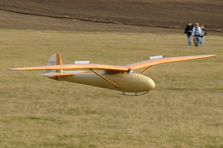
1940s
This era saw gliders produced with a wing spar strong enough that it did not necessitate structs to support the wings. The Eon Olympia (Oly) is an early example and is pictured below. Glide ratio 25:1.
A lot of designs from this period involved a wooden frame of spruce and plywood with fabric covering the wings. Other designs were of the ‘rag and tube’ design – the fuselage consisted of a tubular steel frame covered in fabric. Drag was still a big issue.

1950s
The first glider to use glassfibre extensively was the Akaflieg Stuttgart FS-24 Phönix which first flew in 1957. This material is still used because of its high strength to weight ratio and its ability to give a smooth exterior finish to reduce drag.
Drag was also minimized by more aerodynamic shapes and retractable undercarriages. Flaps were fitted to the trailing edges of the wings on some gliders to optimise lift and drag at a wide range of speeds.

1960s
Pictured below is The Glasflügel 201 Standard Libelle which is an early composite single-seat sailplane produced by Glasflügel from 1967. Glide ratio was 36:1.
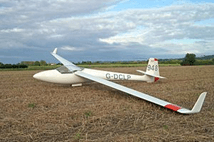
1990s
New materials such as carbon fibre, and carbon kevlar have since been used with computer-aided design to increase performance. With each generation of materials and with the improvements in aerodynamics, the performance of gliders has increased. Modern flapped 18 meter gliders such as the ASG29 (pictured below) have a glide ratio of over 50:1. The largest open-class glider, the ETA has a span of 30.9 meters and has a glide ratio over 70:1.
Most gliders require assistance to launch, though some have an engine powerful enough to launch unaided (Self Launching Motor Gliders). In addition, a high proportion of new gliders have an engine which will sustain the glider in the air, but is insufficiently powerful to launch the glider. The engines can be petrol, jet or more recently electric.
